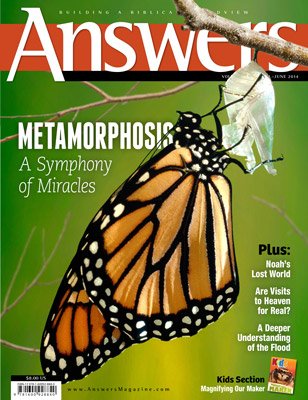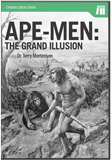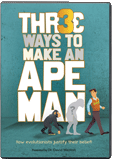
Three Ways to Make an Ape-Man
Resource Preview
A good laugh can really make a lesson stick, as Dr. David Menton regularly demonstrates in his popular workshop “Three Ways to Make an Ape-Man.” Now available on DVD, his presentation covers a heavy topic in such a delightful way that even the hardest skeptic is sure to acknowledge he has a valid point.
A recognized expert in anatomy and former professor at Washington University School of Medicine, Dr. Menton handily shows that so-called ape-men are merely constructs of a worldview, not objective facts.
They were often presented as brutish, hairy, grunting cave dwellers, although nothing in the fossils suggests such a picture.Take Neanderthal people, for example. Until recently, they were often presented as brutish, hairy, grunting cave dwellers, although nothing in the fossils suggests such a picture. Although recent depictions are more accurate than early apelike illustrations, they sometimes still include tangled hair, massive noses and ears, and primitive clothing—which are not found in the fossil record. Dr. Menton shows how Neanderthals represent just another group of humans. Even the distinctive brow ridge is found in modern humans, such as the Australian Aboriginals. This famous “ape-man” was invented by downgrading humans to classify them as apelike—the first way to make an ape-man.
Dr. Menton shows how easy it is to distinguish an ape skull from a human skull. Even a five-year-old can tell the difference. The first test is the nose—human nasal bones protrude from the skull, while ape nasal bones are flat: a pair of glasses sits nicely on our noses but will slide right off an ape face.
Then Dr. Menton applies these tests to one of the latest major finds, Australopithecus sediba, discovered in 2008. Based on the nose test and the others in the lesson, A. sediba is an ape. Despite such evidence, artists typically reconstruct A. sediba, nicknamed Karabo, as distinctly humanlike. Dr. Menton points out the whites in the eyes (sclera) and the smile that one artist added. (Humans have white in their eyes but not apes.) Such details are not based on the evidence found in the fossil record. They illustrate the second way to make an ape-man—by upgrading an ape to be more humanlike.
Make sure to watch the video to learn the third way to make an ape-man! Dr. Menton explains how to interpret the most recent evidence in light of Scripture. In the comfort of your living room, you can join family or friends for an educational experience that is sure to entertain and spark discussion about matters of eternal importance.
Answers Magazine
April – June 2014
A closer look at the Genesis Flood account reveals a beautifully written, unified narrative that points to one inspired author. The passage masterfully highlights one central message: “God remembered Noah.” Along with in-depth articles on the Flood, this issue shows biblical and historical evidences of Christ’s Resurrection, new discoveries about the miracle of a butterfly’s metamorphosis and much more!
Browse Issue SubscribeRecommended Resources

Answers in Genesis is an apologetics ministry, dedicated to helping Christians defend their faith and proclaim the good news of Jesus Christ.
- Customer Service 800.778.3390
- © 2024 Answers in Genesis






